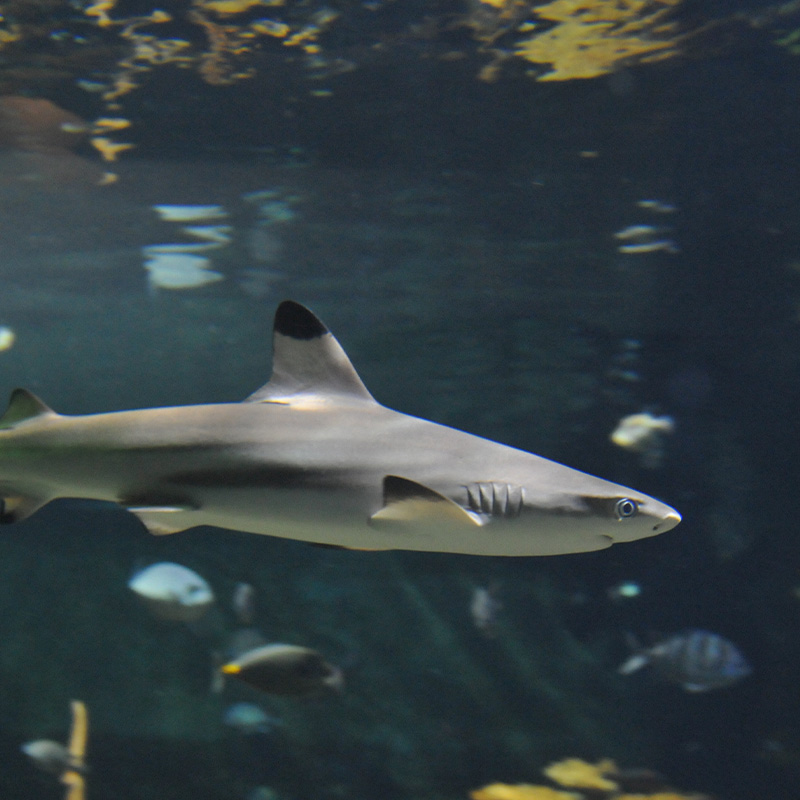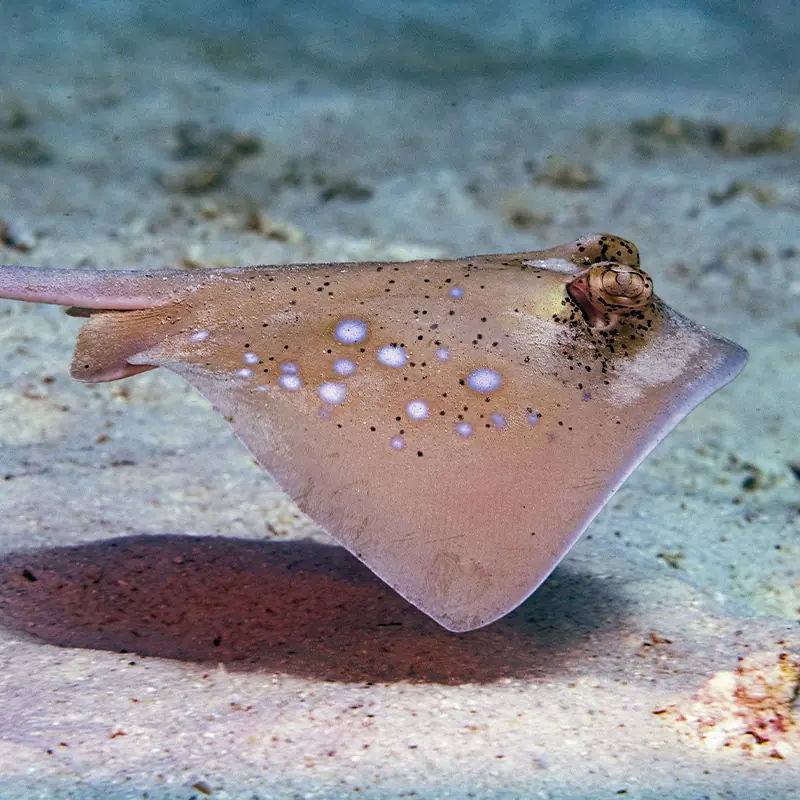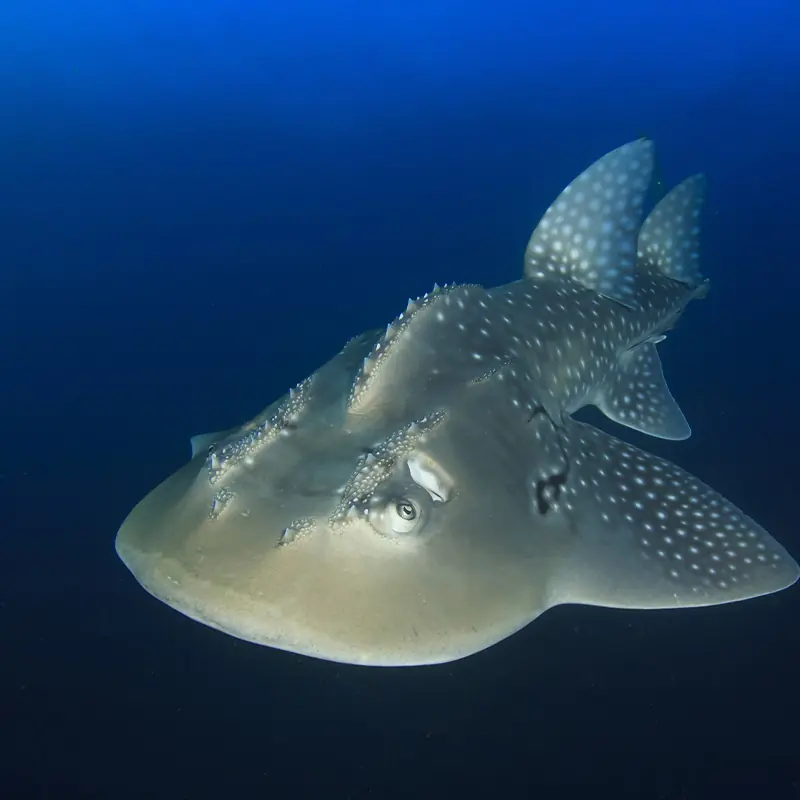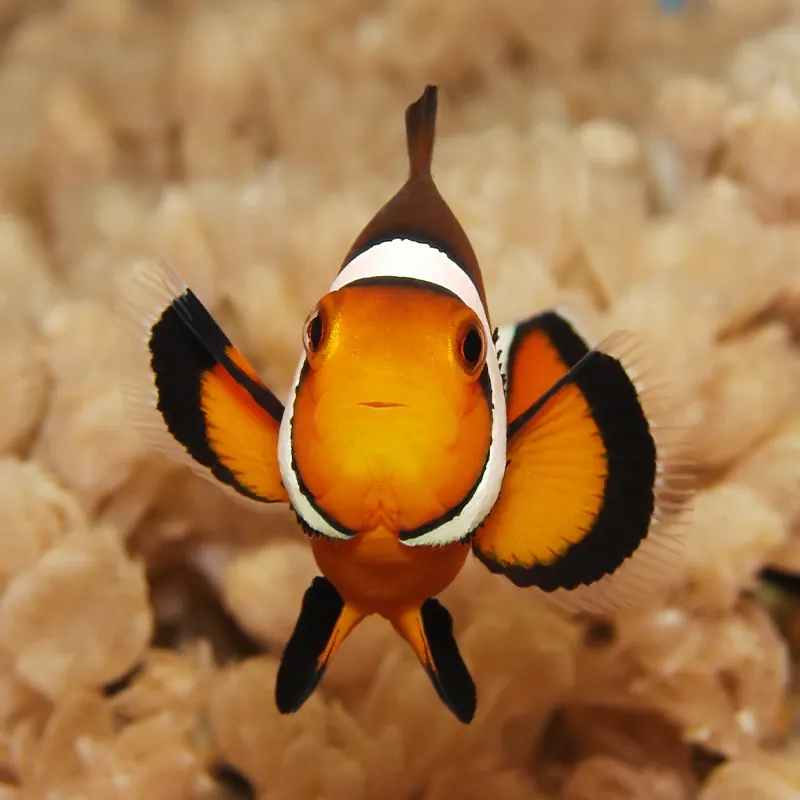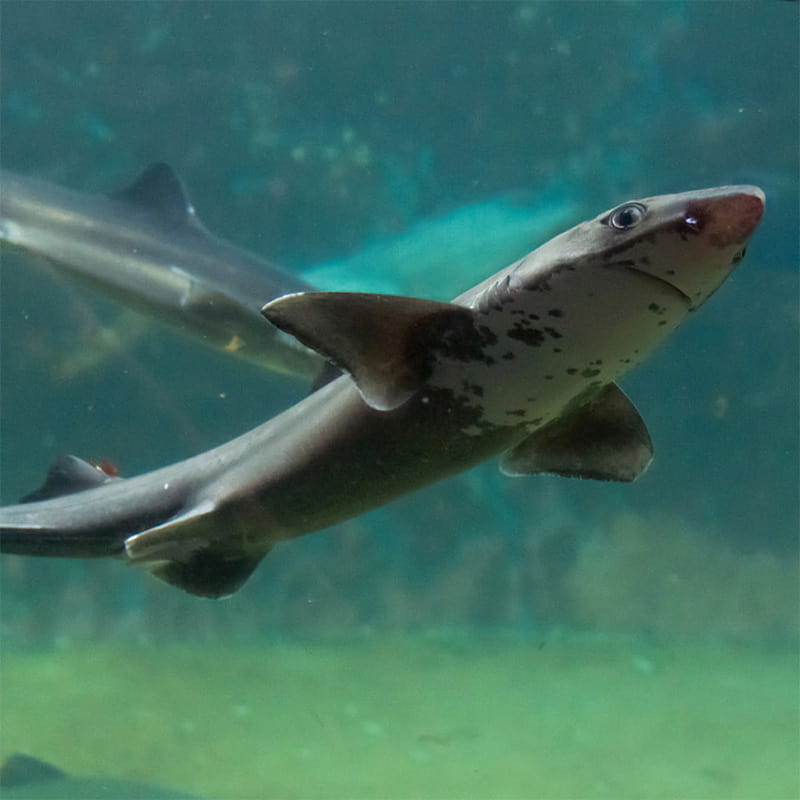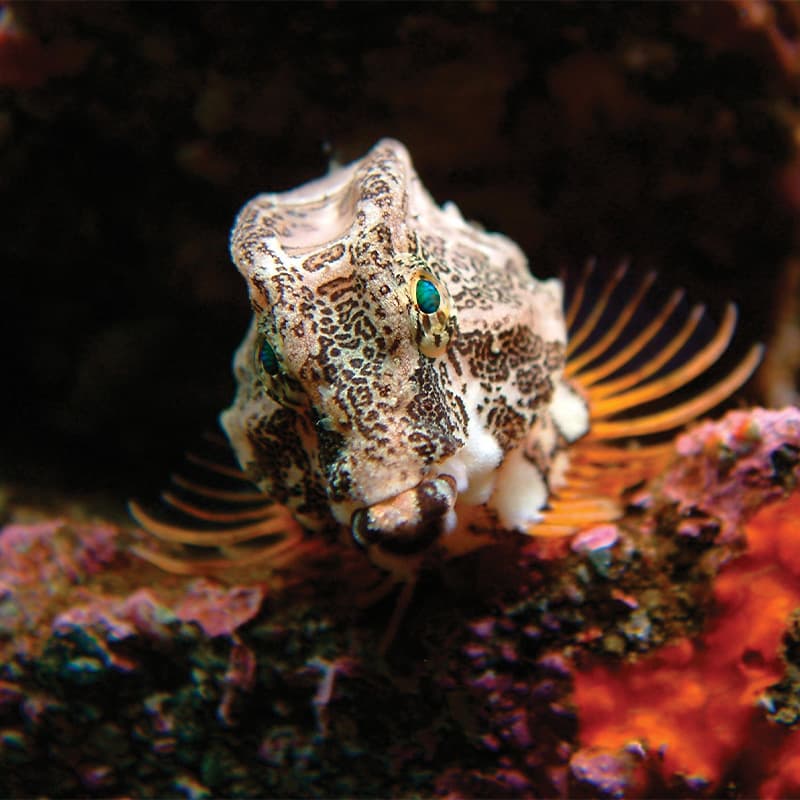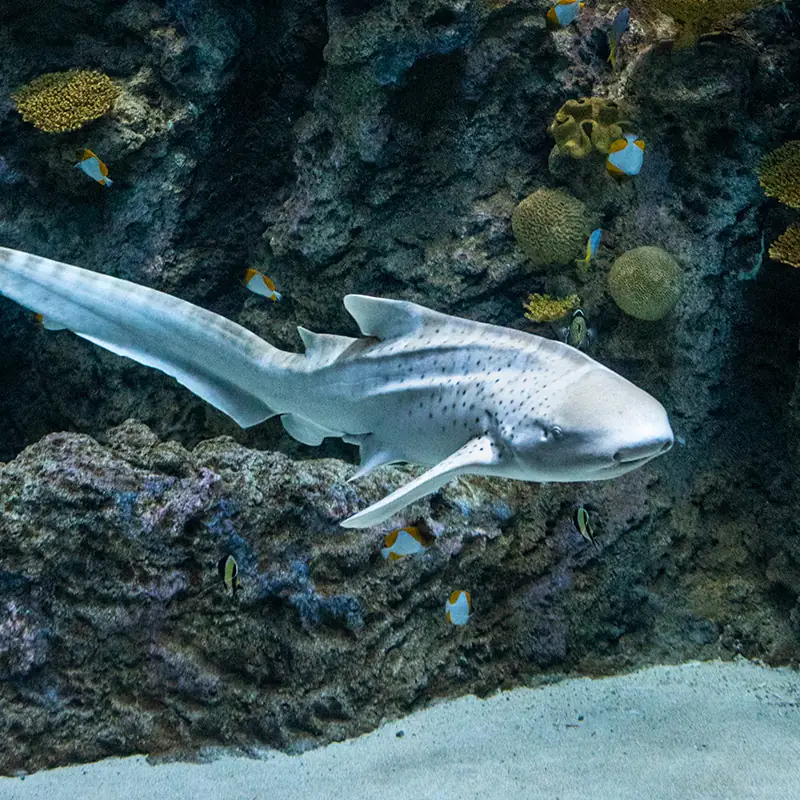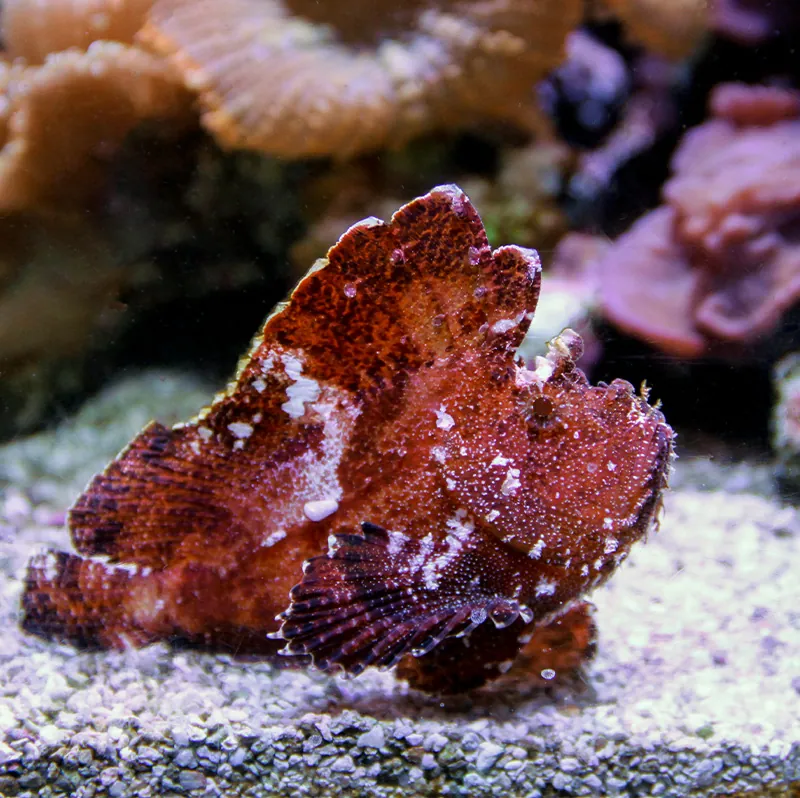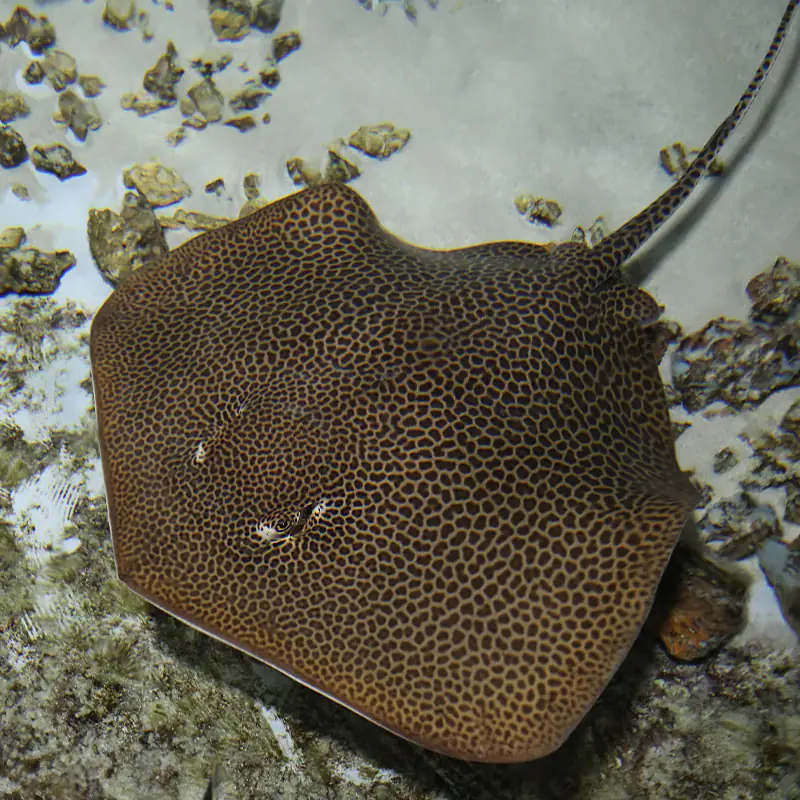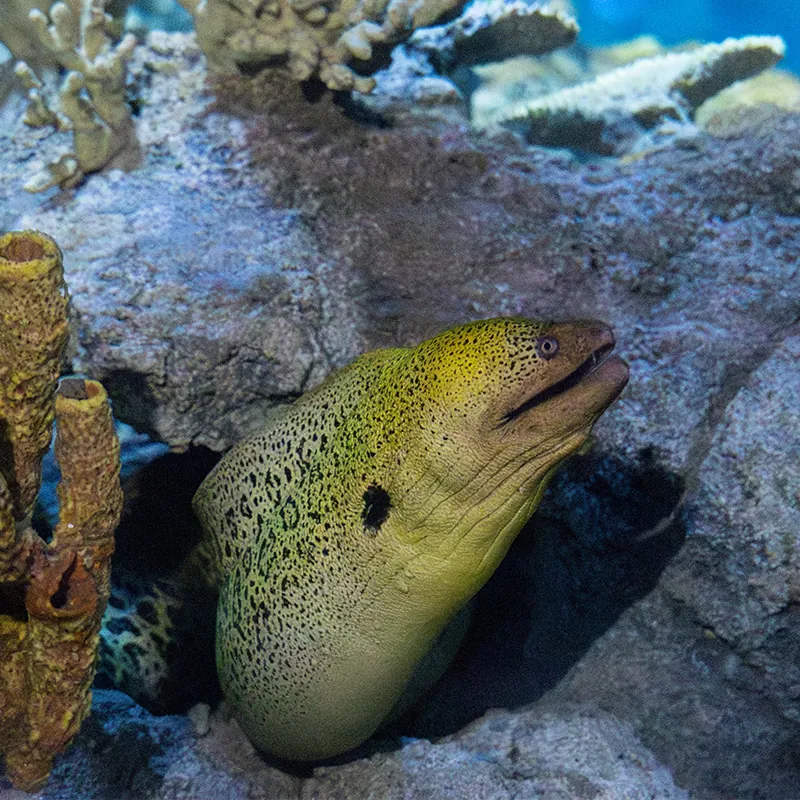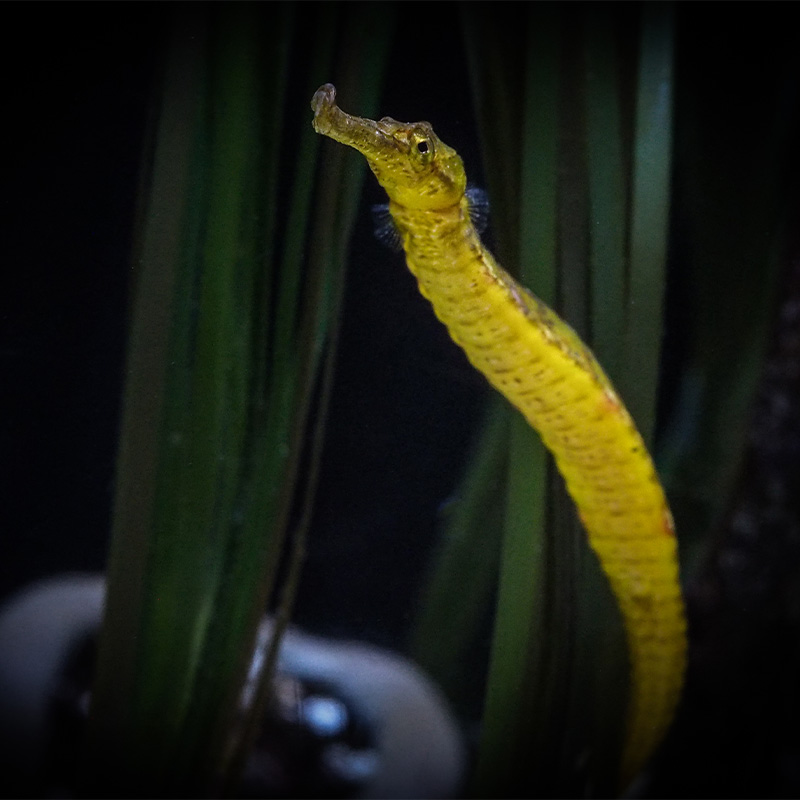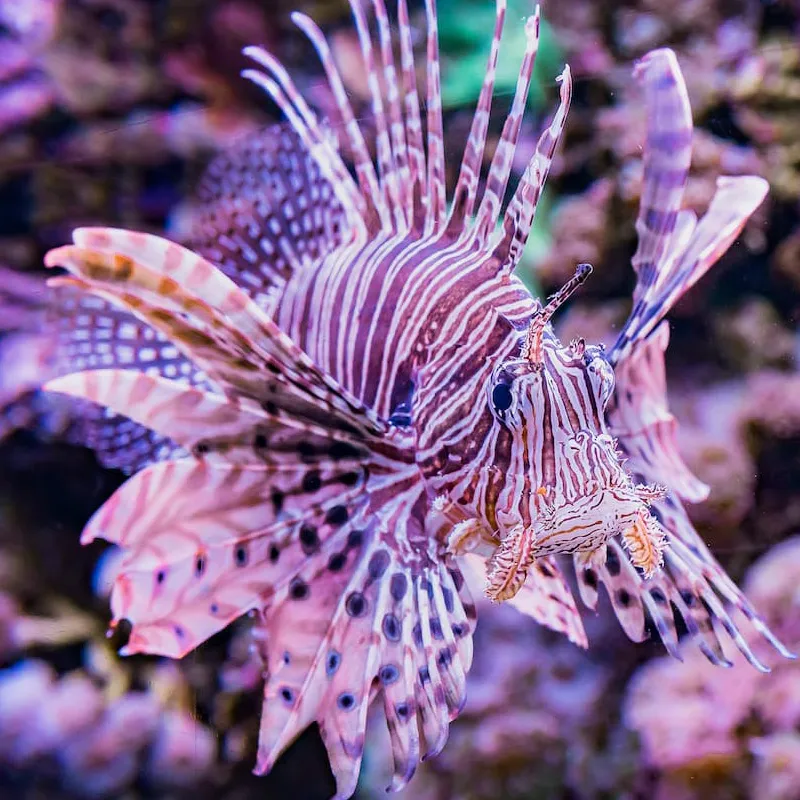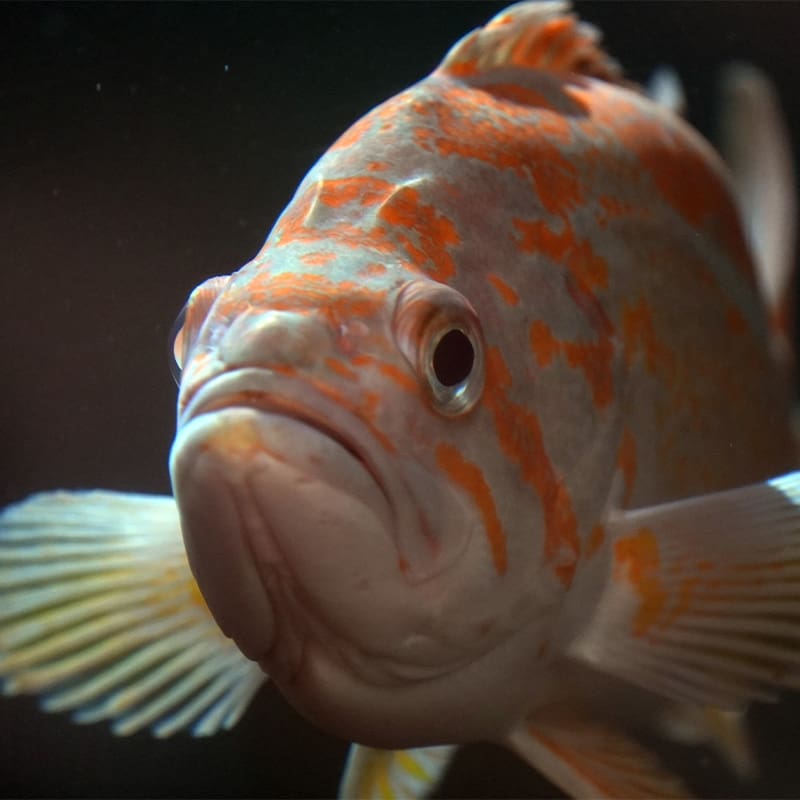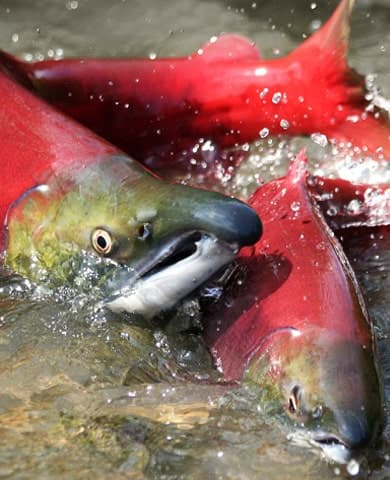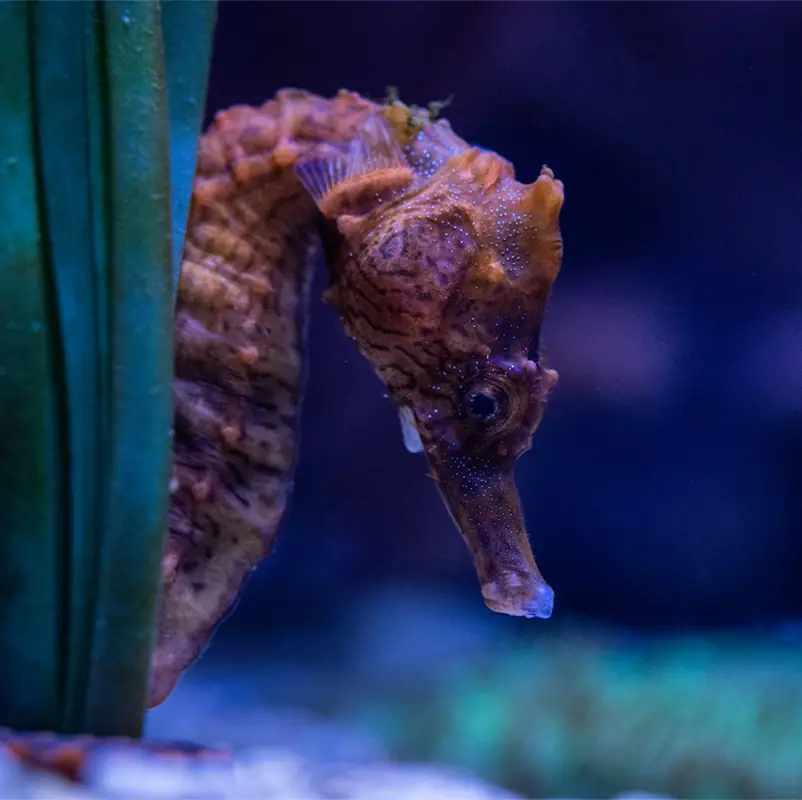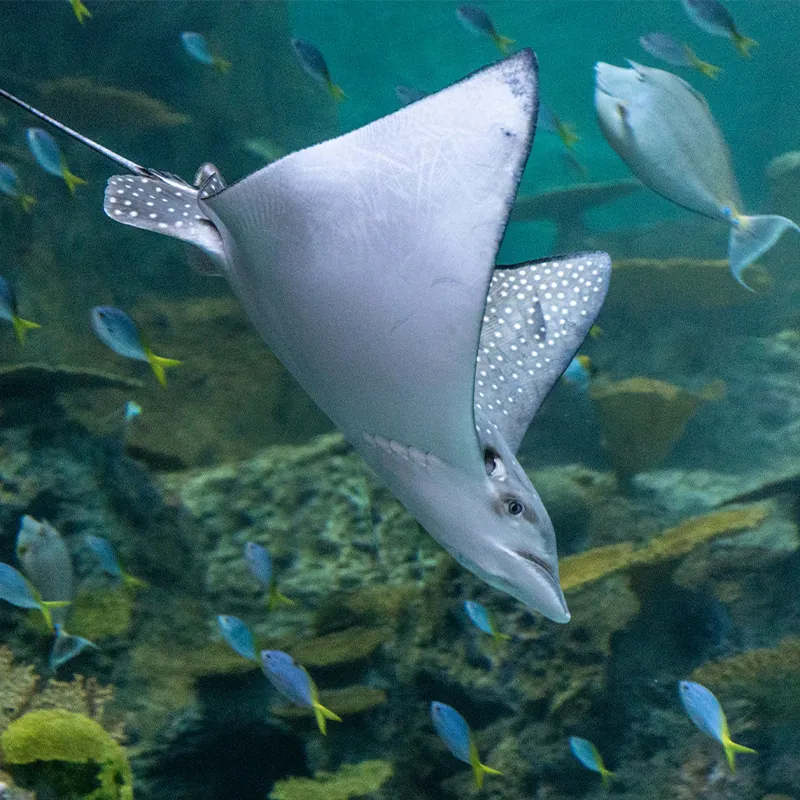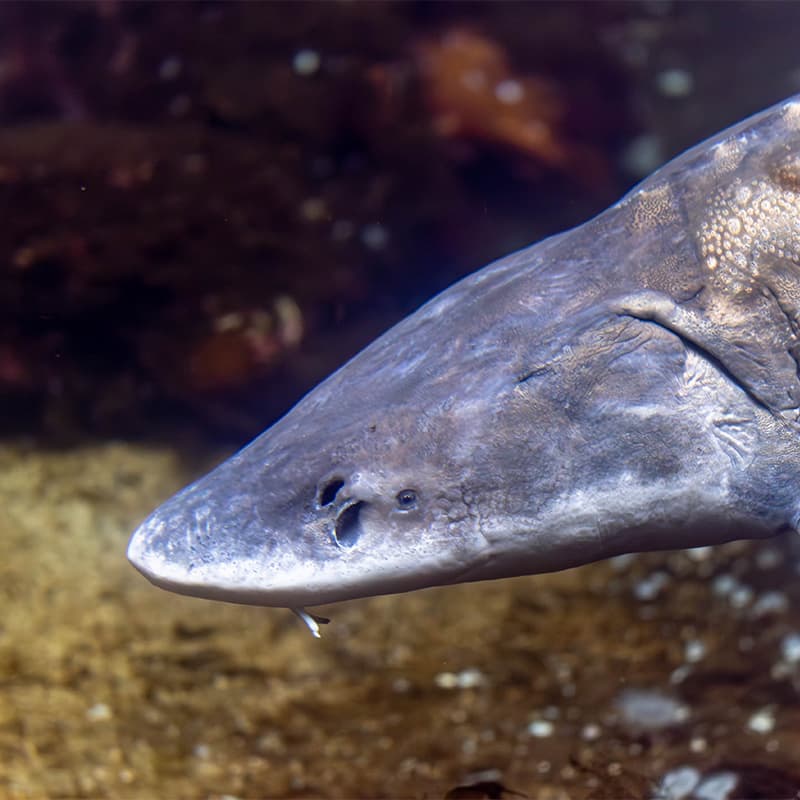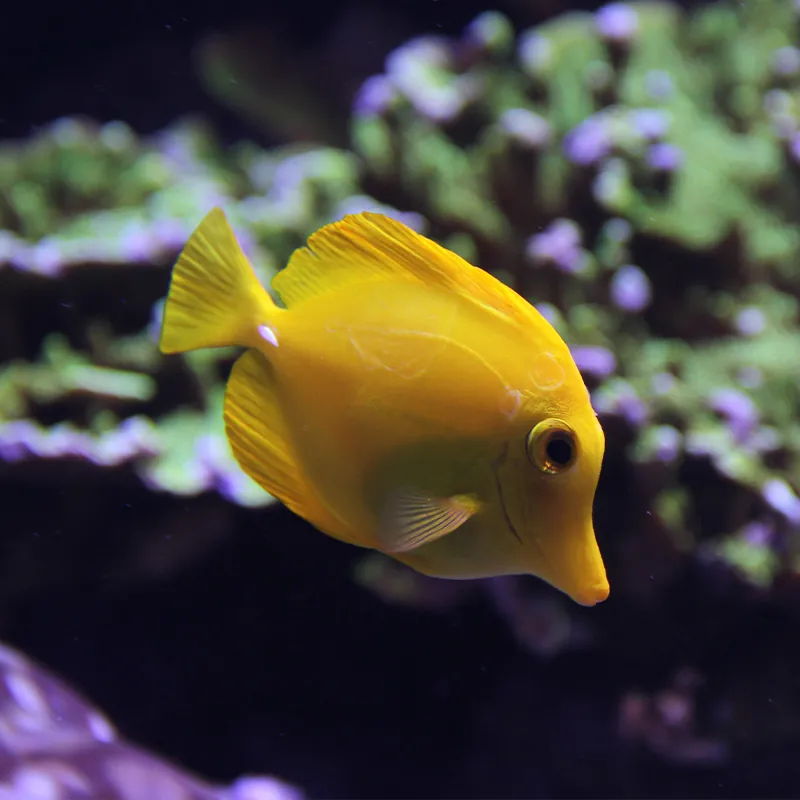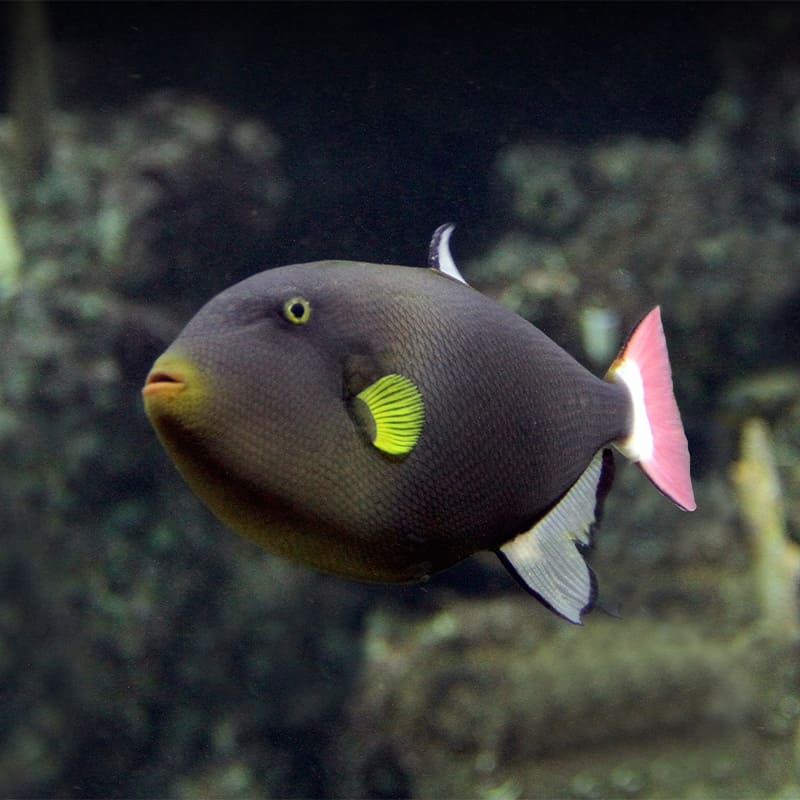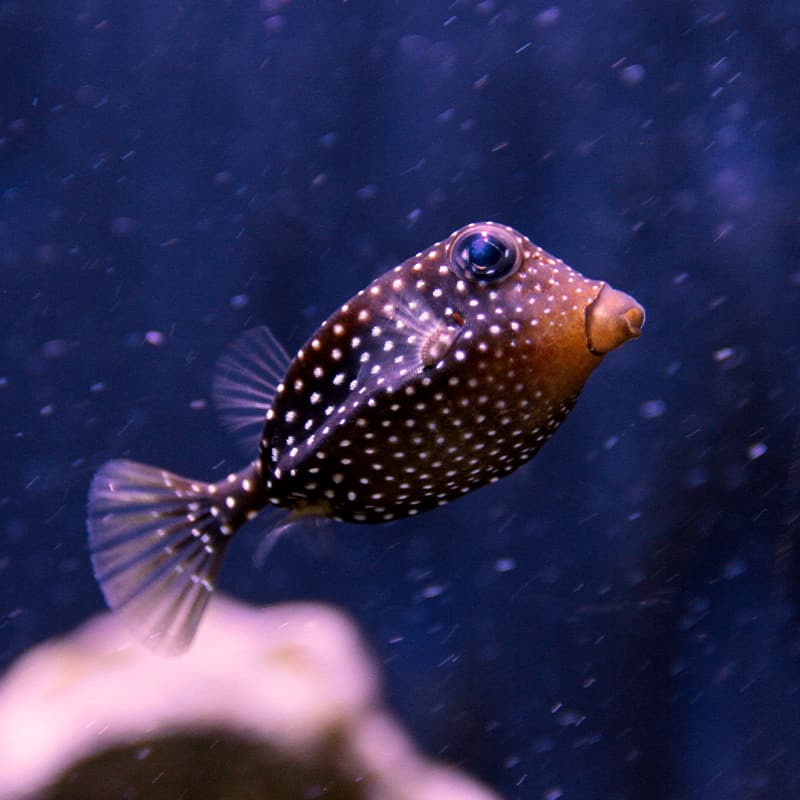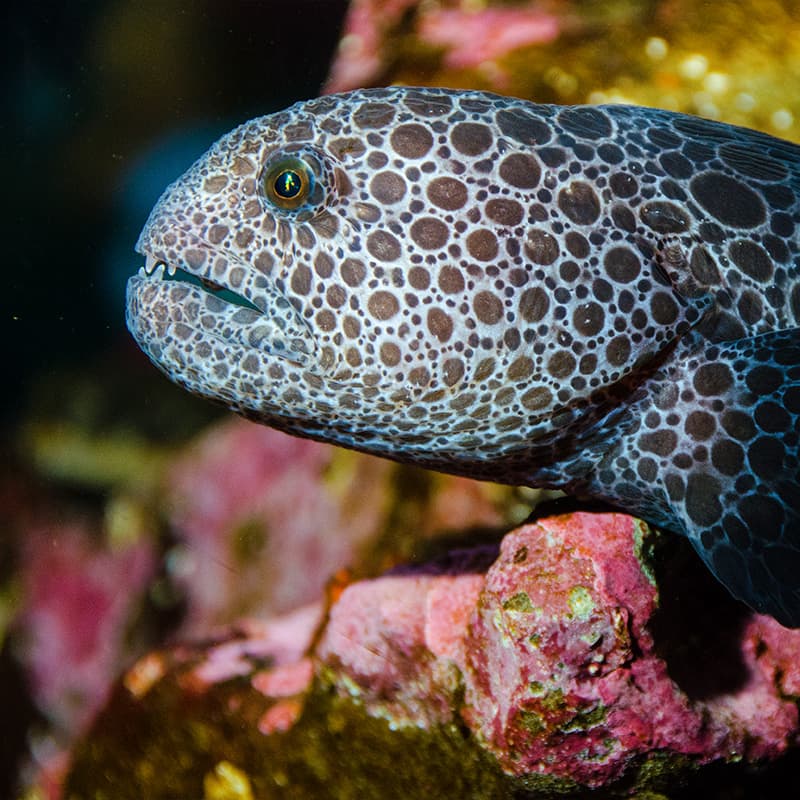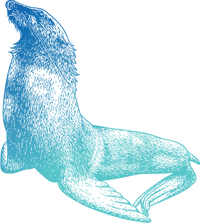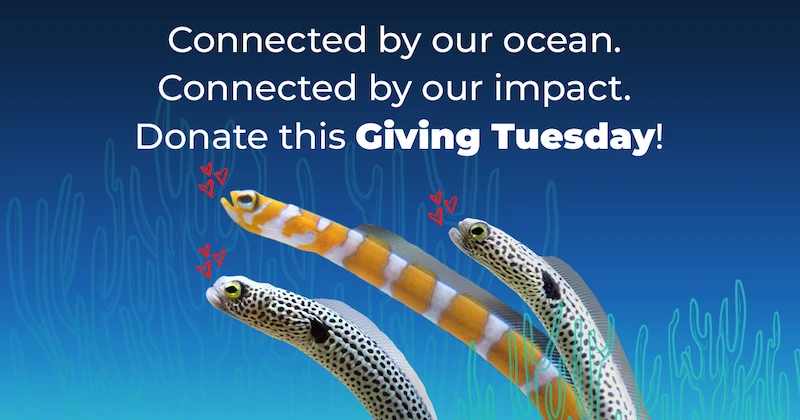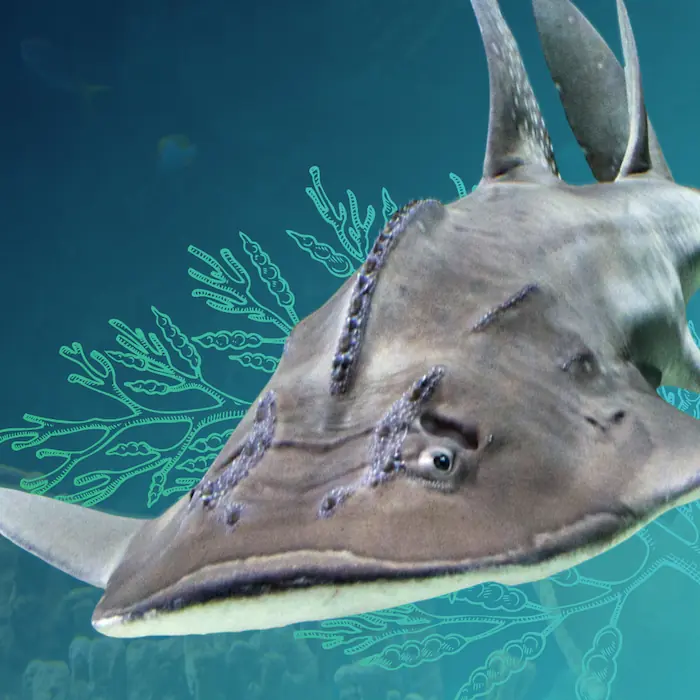- Fish
Pufferfish and porcupinefish
Discover these incredible, expanding fish!
Known collectively as “puffers,” pufferfish and porcupinefish are actually members of two different families—with many similarities. About 120 species fall under the puffer category, and all of them have the ability to rapidly fill their belly with water or air, expanding like a balloon to two or three times their normal size. This increase in size to an awkward shape makes them an unattractive option for potential predators.
At the Aquarium
- The Reef, Ocean Pavilion
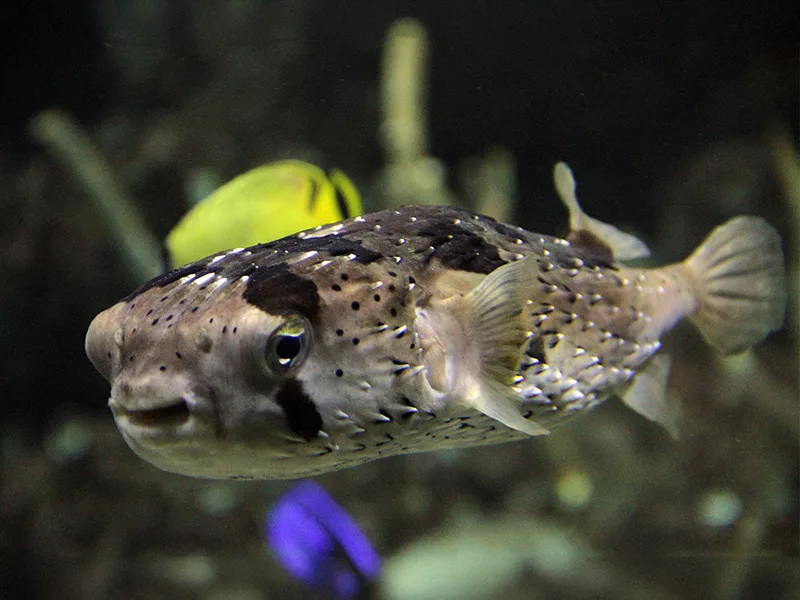
Stiff and slow
Due to their stiff bodies, puffers can’t wriggle and dart through the water and must use their fins to paddle around. Rather than speed, they rely on the ability to “puff up” as a defense mechanism.
Toxic avengers
Any predator that does manage to take a bite out of a puffer may pay a price. Most puffers produce tetrodotoxin, a poison in their organs and skin that is many times more powerful than cyanide. This toxin tastes bad, and can sicken or kill most predators. Some chefs train for years, learning how to prepare the fish safely for humans, but it’s still a risky meal!
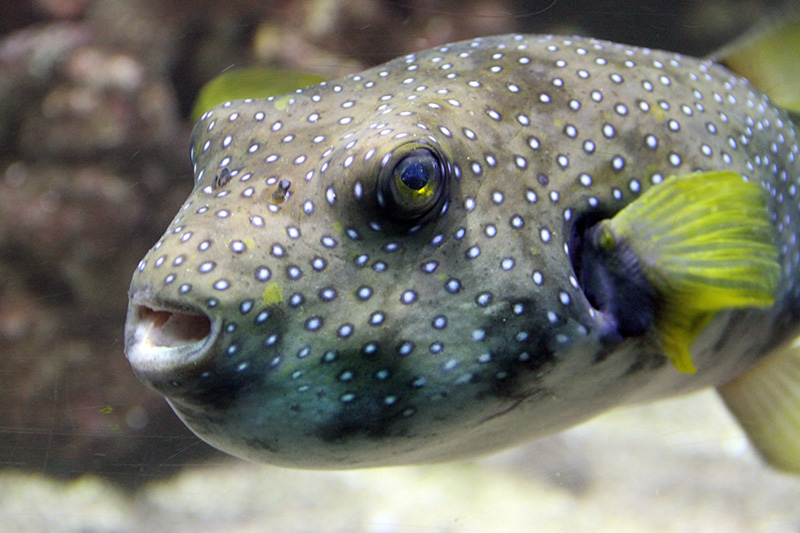
Puffer vs. porcupine
We’ve shared some of many similarities between pufferfish and porcupinefish—but what are the differences? The most obvious one is that porcupinefish (Family Diodontidae), as their name suggests, are covered with spines, which lay flat along their bodies most of the time. These nonvenomous spines, actually modified scales, stand on end when the fish feel threatened—providing an extra deterrent to predators. Pufferfish (Family Tetraodontidae) lack such spines/scales but they may be covered in short, prickly bumps.
Two teeth/two bite plates to eat
Another difference between the families is found in their mouths. As pufferfish develop into adulthood, their front teeth fuse together and jut forward, forming a tough, beak-like structure. Porcupinefish have a strong upper and lower bite plate on each jaw. Both species use their teeth/plates to crack open the crustaceans and shellfish that form part of their diet.
Why do pufferfish “puff up”?
Pufferfish will “puff up” as a defense mechanism if they are threatened. A shape that is more than double its original size, round and sometimes covered in spines is much more difficult to bite and isn’t very appetizing to a predator. However, just as people should stretch before exercising to avoid injuring themselves, puffers need to stretch out their muscles as well. Inflating yourself full of water so that your skin is stretched tight can be very painful, especially if your muscles aren’t used to it. Even though they sometimes do it just to stretch, puffing up often can be stressful for a puffer. So, it’s best if they do it only when they need to. This behavior isn’t a puffer’s only means of defense. Most puffers are toxic to eat. Their internal organs produce a neurotoxin called tetrodotoxin (they’re part of a family of fish known as Tetraodontiformes, which includes triggerfish, boxfish and several other species). This neurotoxin, which has no antidote, can cause paralysis, seizures and even death and is another reason why puffers don’t make good meals.
Quick facts
They rely on the ability to “puff up” as a defense mechanism.
Pufferfish are the second most poisonous vertebrate to humans, right behind poison dart frogs.
Pufferfish need to stretch their muscles before puffing up to avoid injuring themselves!
